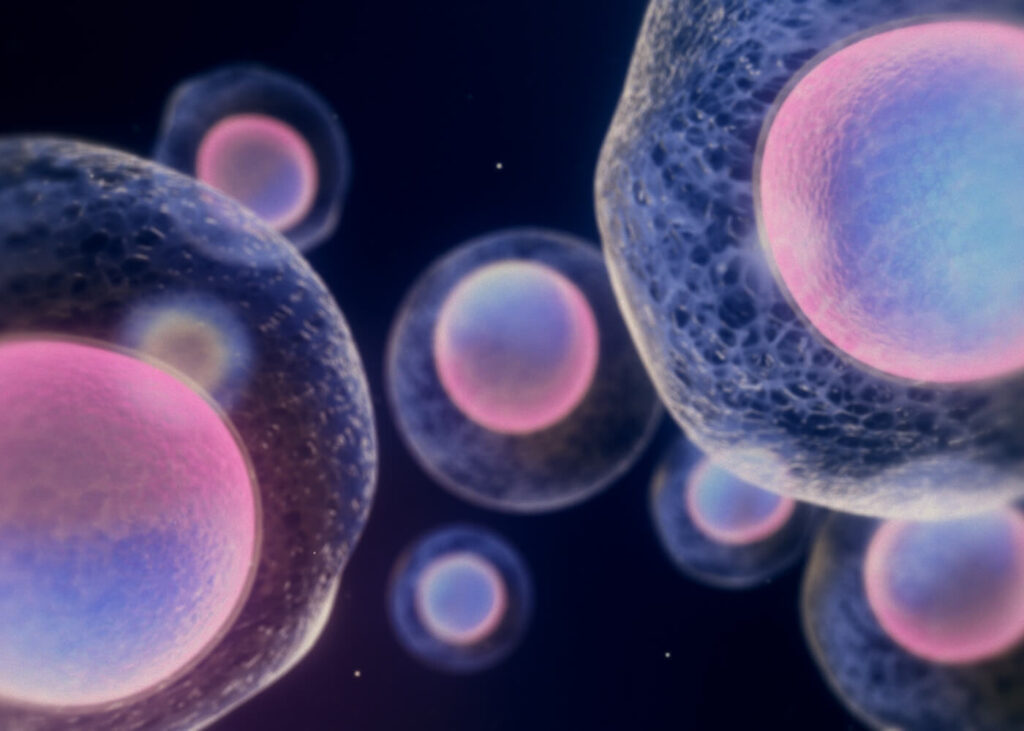


How mitochondria affect ageing

3 mins to read
It is believed that mitochondrial dysfunction, which includes reduced oxidative capability and increased oxidative damage, plays a significant role in biological aging. Several decades ago, it was proposed that mitochondria have a fundamental influence on aging. One theory postulates that excessive creation of extremely harmful reactive oxygen species damages biomolecules over time, causing aging (ROS). The mitochondrial hypothesis of aging was built around this idea since they are the primary cell generators of ROS. This hypothesis states that as mitochondria age, ROS-induced damage accumulates and causes malfunction. Ageing and death are brought on by cells losing their functionality over time.
Subcellular self-autonomous organelles called mitochondria are principally in charge of ATP production and energy synthesis. In addition, mitochondria are crucial for the metabolism of lipids, amino acids, and apoptosis. Although mitochondria contain their own DNA, barely 1% of the roughly 1,000 mitochondrial proteins are encoded by it. The vast majority of mitochondrial proteins are delivered to mitochondria from the cytoplasm and are encoded by nuclear DNA. Due to dynamic mechanisms like mitophagy and fission, mitochondria may fluctuate in number and mass. Degrading malfunctioning or damaged mitochondria requires a particular type of autophagy called mitophagy.
Changes in Mitochondrial DNA in Aging
Four protein complexes make up the electron transport chain, which is connected to the enzyme ATP synthase in the inner mitochondrial membrane. ROS are regarded as hazardous by-products of the mitochondrial electron transport system that are undesired and harmful.
ROS appear to be a primary mediator of age-associated cellular damage because of their high reactivity. ROS can function as molecules that send signals. It’s interesting to note that whereas large levels of ROS diminish C. elegans’ lifetime, modest concentrations may potentially improve longevity. At high ROS levels, mitochondrial respiration mutants of C. elegans showed a counterintuitive increase in lifespan. Hypoxia-induced factor-1 (HIF-1), a transcription factor linked to a longer lifespan, was shown to be activated by ROS. Many species, including C. elegans, Drosophila, and mice, have demonstrated that mildly inhibiting mitochondrial respiration may enhance lifetime. This finding suggests that an increase in longevity caused by mildly suppressing mitochondrial respiration is evolutionarily maintained.
Protection from oxidative stress is provided by antioxidant enzymes involved in the inactivation of ROS. In fact, oxidative stress may rise as a result of abnormalities in the function of mitochondrial antioxidant enzymes. Mice having a transgene for an antioxidant enzyme in the mitochondria, such as catalase or Mn-dependent superoxide dismutase (Mn-SOD), lived longer, but mice missing Mn-SOD perished young due to severe mitochondrial malfunction and neurotoxicity. A 30% increase in longevity was seen in mice lacking the protein p66shc, which is involved in the formation of ROS in the mitochondria independent of the OxPhos pathway.
ATP production and mitochondrial oxidative capability may be impacted by enzyme alterations. Human ATP production capability declines by 8% every ten years. Similarly, it was discovered that the oxidative capacity per mitochondrial volume and the oxidative capacity per muscle volume were both 1.5 times lower in aged individuals. Low physical activity may contribute to the age-dependent reduction in mitochondrial function since few studies have found a connection between physical activity levels in old and young persons and age, mitochondrial respiration, or ATP flow.
Free radical theory of aging
Additionally, a direct connection exists between the senescent state, ROS production, and mitochondrial metabolism. It was discovered almost forty years ago that growing human cells in an environment with less oxygen might greatly increase the longevity of the cells. In mouse cells, a same impact was also seen. Similar to OIS, which is brought on by Ras expression and causes a rise in ROS levels, OIS may be stopped by either cultivating these cells in a low oxygen environment or adding an antioxidant to the medium. The p53 target and cell cycle regulator p21, which also appears to govern senescence in a redox-dependent manner, are two other regulators of senescence and ROS that have been linked to similar interactions.
The free radical hypothesis of aging, which has long held that ROS play a causal role in the aging process, is highly supported by all of these facts. However, a number of data imply that the senescence-inducing actions of ROS on cells may not necessarily translate to organismal aging. For instance, while scavenging mitochondrial oxidants seemed to increase lifetime in certain animal models, a consistent correlation between ROS levels and lifespan was apparently lacking in other instances. Furthermore, a surge in ROS sometimes seems to lengthen longevity rather than shorten it.
Mitochondria and mtDNA heteroplasmy
MtDNA heteroplasmy, or the coexistence of wild-type and mutant copies of mtDNA, may contribute to aging and other age-related disorders. Mammals’ somatic mtDNA mutations increase with aging and have been theorized to offer a survival benefit. Human aging results in a considerable buildup of tissue- and allele-related heteroplasmies. In fact, mtDNA heteroplasmy has been discovered in centenarians, indicating that it may aid in good aging and long life. It’s interesting to note that reduced mtDNA copy number is linked to common frailty and may be a reliable indicator of all-cause death in people.
Mitochondrial Quality Control and Aging
Chaperones, proteases, and methionine reductase are a few of the specialized enzymes that mitochondria have to refold and get rid of misfolded proteins. In the short-lived fungus Podospora anserina, deletion of the mitochondrial protease PaLon1, which is involved in protein quality control, causes a marked reduction in lifespan. In contrast, overexpression of PaLon1 had no effect on fungus longevity but was linked to improved mitochondrial function and prolonged good health. It is thought that the mitochondrial protease Lon, whose downregulation is linked to aging and age-related illnesses, is in charge of breaking down oxidized proteins. Therefore, longevity or at least an increase in the healthy lifespan may be related to the appropriate operation of the quality control system linked to the mitochondria.
By destroying cytosolic proteins that are situated at the outer mitochondrial membrane, mitochondria support the cellular system of protein quality control linked to ubiquitination and protease-dependent degradation of unfolded proteins. In mammals, it has been discovered that the activity of the ubiquitin-protease system decreases with age. However, as people age, the expression of some parts of this system, such ubiquitin-specific proteases and particular proteasome subunits, increases, while the levels of other parts either stay the same or go down. Aged rats’ muscles showed increased expression of proteasome-associated proteins and levels of 26S proteasomes that were 2- to 3-fold greater than those of mature animals. It is true that age-dependent activation of the ubiquitin-protease system may be a factor in myofibrillar protein degradation that is accelerated and age-related muscle atrophy. It is necessary to describe the precise function of protein breakdown related with mitochondria in aging since it is not yet fully known.
Mitophogy and aging
Analysis of mitochondrial activity in tissues, including the skeletal muscle of elderly people, shows a drop in mitochondrial respiratory capacity to around 50% of what is found in younger people and a reduction in ATP. Most people think that these mitochondrial impairments are a primary cause of age-related sarcopenia since they strongly correlate with functional decrease in muscular strength. While accumulation of mtDNA mutations may, in certain extremely rare circumstances, contribute to this functional deficiency, it is more probable that other processes are at work. A rise in age-dependent mitochondrial damage, a drop in age-dependent clearance of defective mitochondria, or a combination of both processes might explain an increase in steady-state levels of malfunction. Mitophagy is the process through which damaged but undamaged mitochondria are eliminated. In the context of inflammasome activation, where mitophagy limits immune activation by keeping the number of damaged mitochondria low, we have already briefly described this mechanism. Uncertainty exists on how mitophagy is molecularly regulated. The buildup of ubiquitinated proteins on the outer mitochondrial membrane is one understood trigger. The E3-ubiquitin ligase parkin, which is in turn triggered by PTEN-inducible putative kinase 1 (PINK1), can catalyze this process. It has been demonstrated that mitochondrial malfunction stabilizes PINK1 levels in cultured cells, starting this cascade. The relationship between mitophagy and age-related diseases has been enhanced by the discovery that both parkin and PINK1 are associated with hereditary forms of Parkinson’s disease. However, there are still significant limitations, indicating that our understanding is far from comprehensive. First, Parkin germline deletion produces rather mild consequences, at least in mice.

-

Ultimate Mind
Kick start the day with a packet of Ultimate Mind to boost memory and concentration throughout the day. The Ultimate Mind Cookie is a healthy snack that promotes memory, concentration, and cognitive function. BUY NOW How Do the Brain and Mind Function? The brain is the control centre for the body. It regulates all of […]
-

Ultimate Restore
Why is a Healthy Digestive System Important? Good digestive health is essential for good overall health. Your digestive system is responsible for breaking down the food you eat, extracting nutrients, and eliminating waste. The digestive system includes the mouth, oesophagus, stomach, small intestine, large intestine (colon), rectum, and anus. The entire length of the digestive […]
-

Ultimate Cleanse
The Ultimate Cleanse Meal Replacement is formulated with whole-food nutrition, patented and potent ingredients of more than 55 highly absorbable and functional ingredients and essential nutrients. Packed with fibre and protein, to support detoxification, cellular repair, and cellular rejuvenation. Benefits include maintaining a healthy digestive system, important for detoxification and immune health. Why is a […]